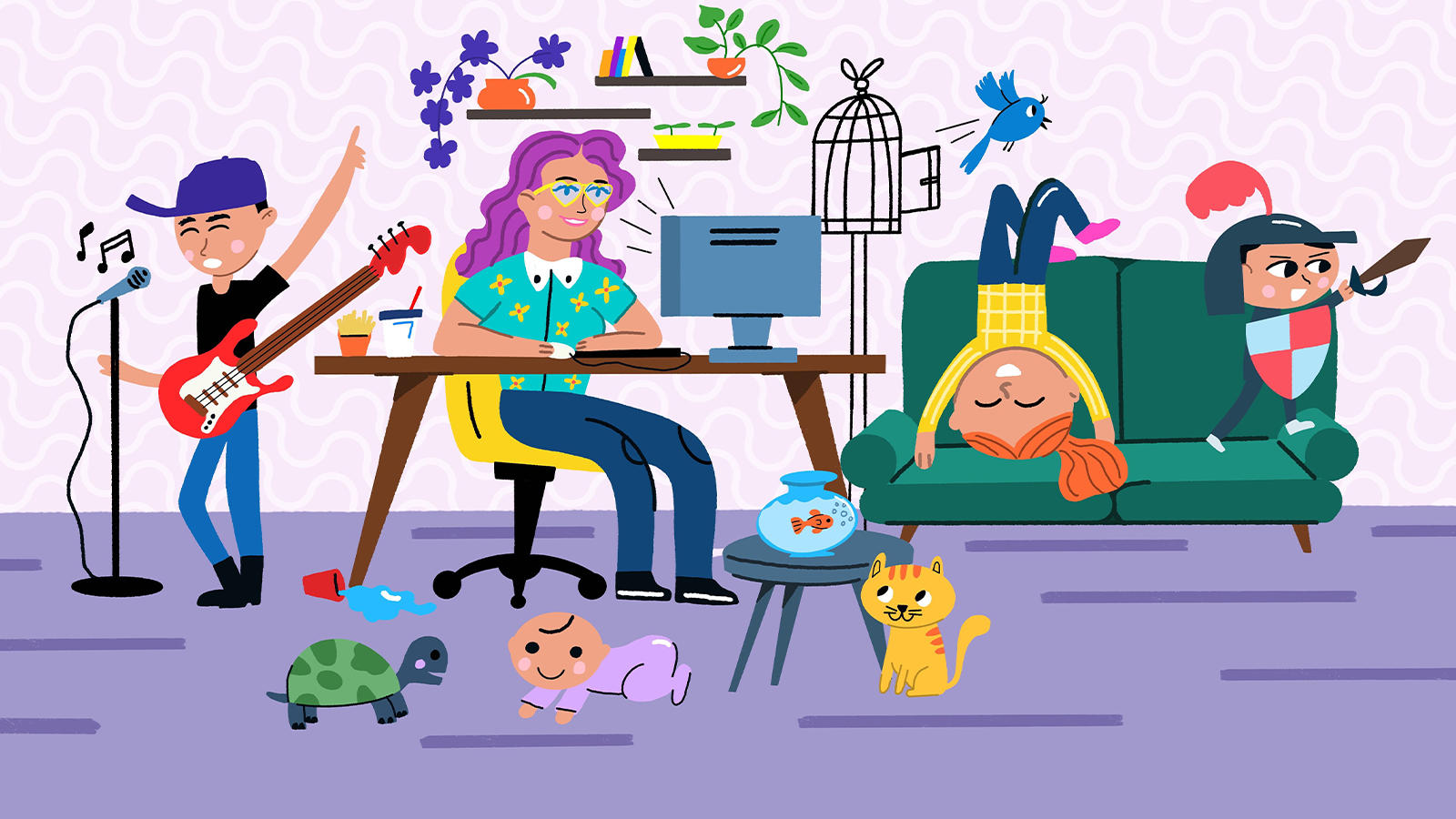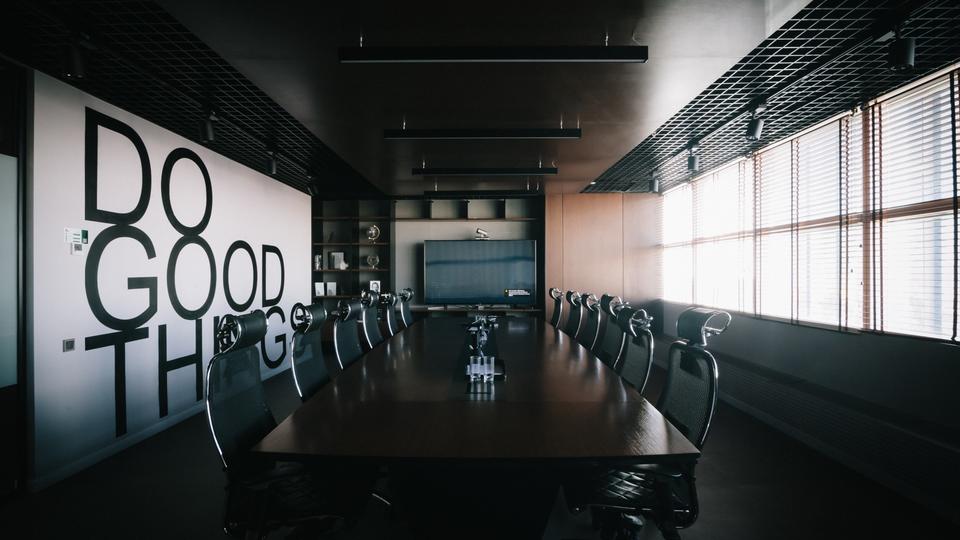
Breakdown
Why Did We Stop Taking Breaks When We Started Working Remotely?
By Jennie Latson
Why Did We Stop Taking Breaks When We Started Working Remotely?
“You’re on mute” might be the Zoom quote of the year, but on Slack — at least around lunchtime — it seems to be: “Grabbing a quick bite.”
That was the daily refrain I heard from colleagues at Rice University’s Jones Graduate School of Business, where I edit the school’s alumni magazine, after we started working remotely in March. And while we were all very busy doing very important jobs, it’s not like we were developing a coronavirus vaccine. Was our work really so urgent that we couldn’t afford to take more than a few minutes for the mid-day meal? And why were we all “grabbing” our lunches? Were we afraid that if we loosened our grip, someone might snatch them out of our hands?
This is how downtime feels in general these days: snatched away. While working from home has eliminated our commutes and given us the freedom to work in our pajamas, it’s also blurred the lines between work and life — and deprived us of the ability to leave the office behind, physically and mentally. A May survey by the career website Monster found that half of remote workers said they were experiencing burnout, but roughly the same number weren’t planning to take any days off to decompress.
That’s a big mistake, says Charlotte Fritz, a professor of industrial and organizational psychology at Portland State University. For one thing, she says, working remotely during a global health crisis is not the same as working from home under normal circumstances. There are additional demands at home — like educating your kids, if you’re a parent — along with heightened anxieties.
Even when we’re not in the middle of a deadly pandemic, Fritz says it’s crucial to our wellbeing to attain what she and other researchers call “psychological detachment” from work. “By ‘psychological detachment,’ we mean mentally letting go of work when we leave the workplace,” she says. “Currently, some of us have overlap between the physical workspace and home, and it might make it a lot harder to detach.”
Detaching requires us to take breaks, whether they’re multiple-day vacations or short moments of meditation or relaxation during the day. But the health crisis itself is making it harder to take the downtime we need to deal with the stress it’s causing. Fewer of us are planning vacations because we don’t feel safe traveling. And the economic uncertainties of the pandemic are adding to a sense of pressure to be a perfect employee: highly productive and always on.
Remote workers tend to take fewer breaks in general, in or out of a pandemic, in part because we can’t demonstrate our work ethic in the same ways from home that we could in an office, explains Minjae Kim, an organizational behavior professor at Rice Business. “Because our interactions are so limited, we have fewer opportunities to prove our commitment and our value,” Kim says. “One way to do that is to show that we’re working overtime, or by staying on Zoom all the time.”
The latter is more common in Korea, where Kim has studied workplace behavior. The pressure to demonstrate your commitment to your company — your willingness to make sacrifices for the sake of the organization — is greater in Korean workplace culture, and the pandemic has magnified that, Kim says.
“Since the pandemic began, people are pressured to keep their camera on all the time, even if they’re not in a meeting,” he says. “It’s a little more of an extreme setting, where signaling commitment is more intense.”
The problem is that changes to our work culture — including the “always on” mentality many of us are feeling now — have a tendency to become ingrained even after the crisis that provoked them has passed. That could mean that remote work sticks around long after the pandemic subsides, which may be a good thing overall. But it could also mean that if we let our lunch breaks slip from our grasp now, we’ll never be able to grab hold of them again.
Lunch breaks play a particularly vital role when it comes to maintaining our mental stamina, says John P. Trougakos, an organizational behavior professor at the University of Toronto Scarborough. In an aptly titled study, “Lunch Breaks Unpacked,” Trougakos and his colleagues found that being able to disconnect from work at lunchtime, for an activity entirely of your own choosing, was linked to a reduction of fatigue at the end of the workday and improved employee performance and wellbeing.
“We have a fixed amount of mental energy, just like we do physical energy,” he says. “When you don’t have a break, you become less and less efficient, and it becomes more stressful. That stress accumulates throughout the day, and it’s emotionally exhausting. If it accumulates day after day, week after week, that’s how you get burnout.”
Assuming remote work does linger after the pandemic ends, we’re going to have to find ways to make it sustainable — without burning out the workforce, Trougakos says.
“Remote work can be a huge benefit for people. We tracked 500 Canadian workers at the start of the pandemic for 12 weeks, and 83 percent didn’t want to go back to the way things were. They were adamant that ‘the way things were’ wasn’t working either,” he says. “Most people preferred a hybrid system where they had the freedom to go in some days and they could work from home some days.”
Luckily, there are ways to make remote work more workable, Trougakos says. “If remote workers structure their day well, they can find extra time for breaks. They don’t have their commute time anymore; they can use that time to take a walk or get some exercise. They have, in theory, more flexibility to plan out their best productivity windows. That could mean if you’re a night owl, you might schedule a block of work in the evening. But that doesn’t mean work your full workday AND work the night shift.”
Managers, meanwhile, should be firm about their expectations for the quality of work being done — and flexible about when it happens, he says.
“Are your employees getting the things done that they need to get done in a high-quality way? Then leave them alone and give them the freedom to make their own schedule,” he says. “Managers need to create some time for their employees to go offline, not just at the end of the day but during the day. Lunch is lunch; maybe you encourage coffee breaks in the morning and afternoon. If you’re really progressive, build in a half-hour nap break at 2 p.m. and watch them come back energized and productive at the end of the day.”
Managers can also encourage employees to take more downtime just by assuring them that they are valued and that their jobs are not in jeopardy, Kim says. Without that pressure to prove themselves, workers not only breathe easier but also perform better. And over time, as the workforce becomes increasingly remote, expectations will adjust and we’ll likely come up with new ways to demonstrate our commitment to our work — while still finding time for a leisurely lunch.
“It has to be managed, though,” Trougakos says. “We plunged into the pandemic with no preparation, no planning and no structure. It was chaos in a lot of ways. Now employers are seeing that there’s only so long you can maintain a feverish pace. As we come to a realization of what the new normal is, there will be issues that come up that maybe we didn’t expect, and companies will need to adapt.”
Jennifer Latson is an editor at Rice Business and the author of “The Boy Who Loved Too Much,” a nonfiction book about a genetic disorder that is sometimes called the opposite of autism.
Never Miss A Story


